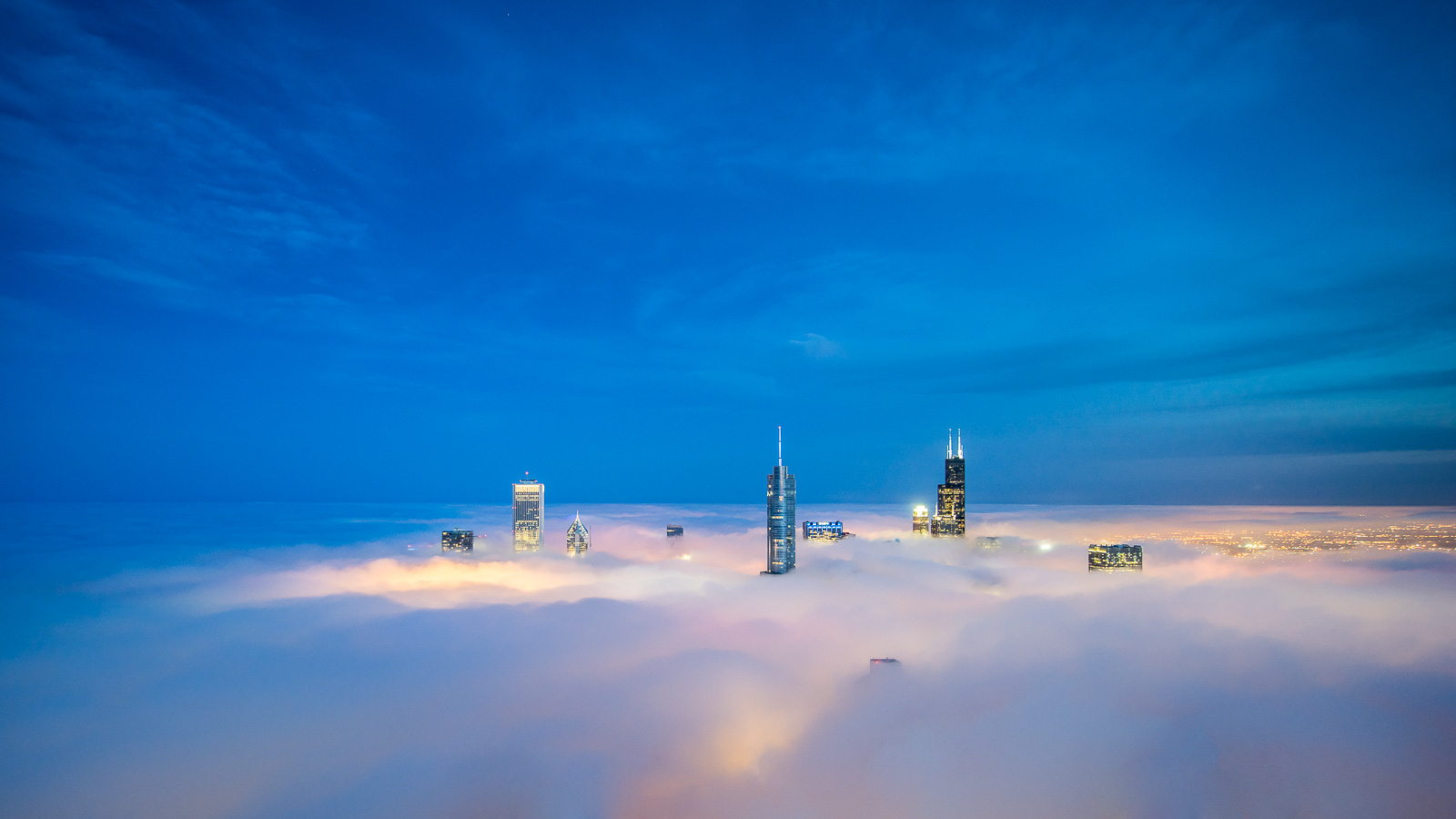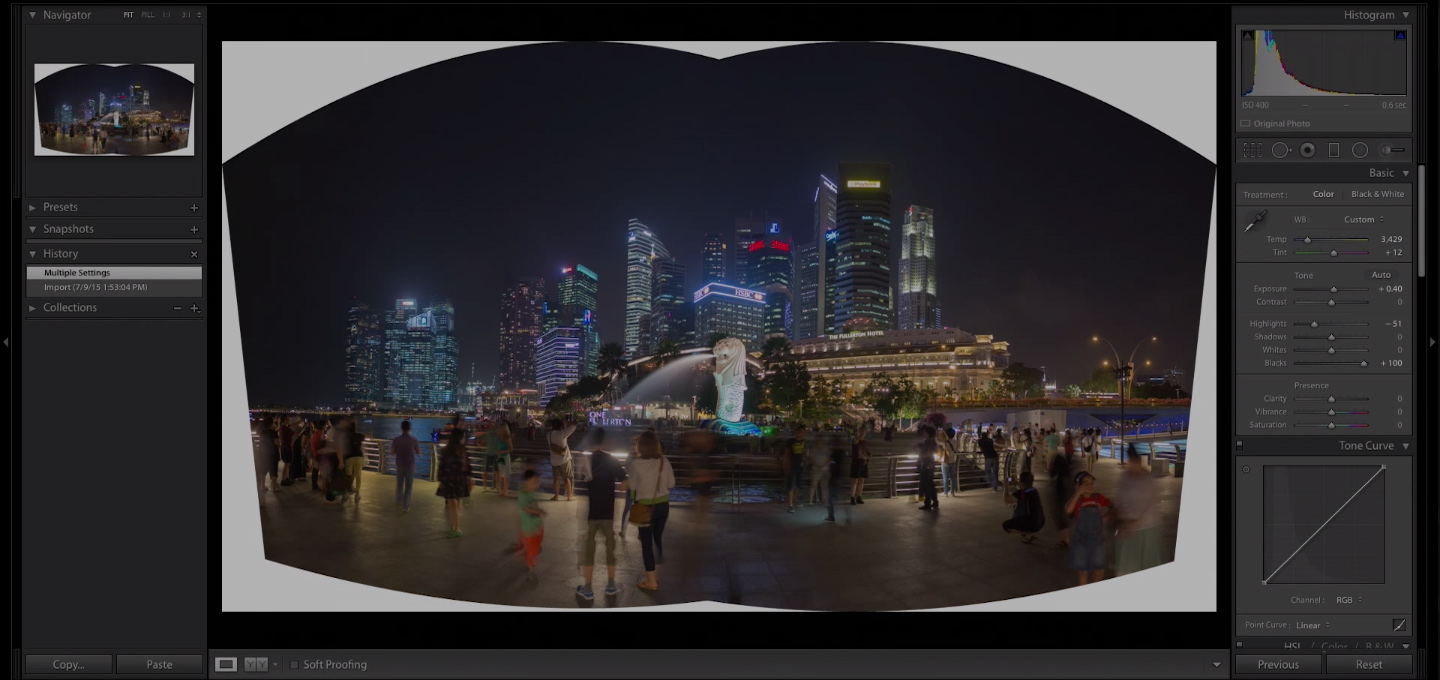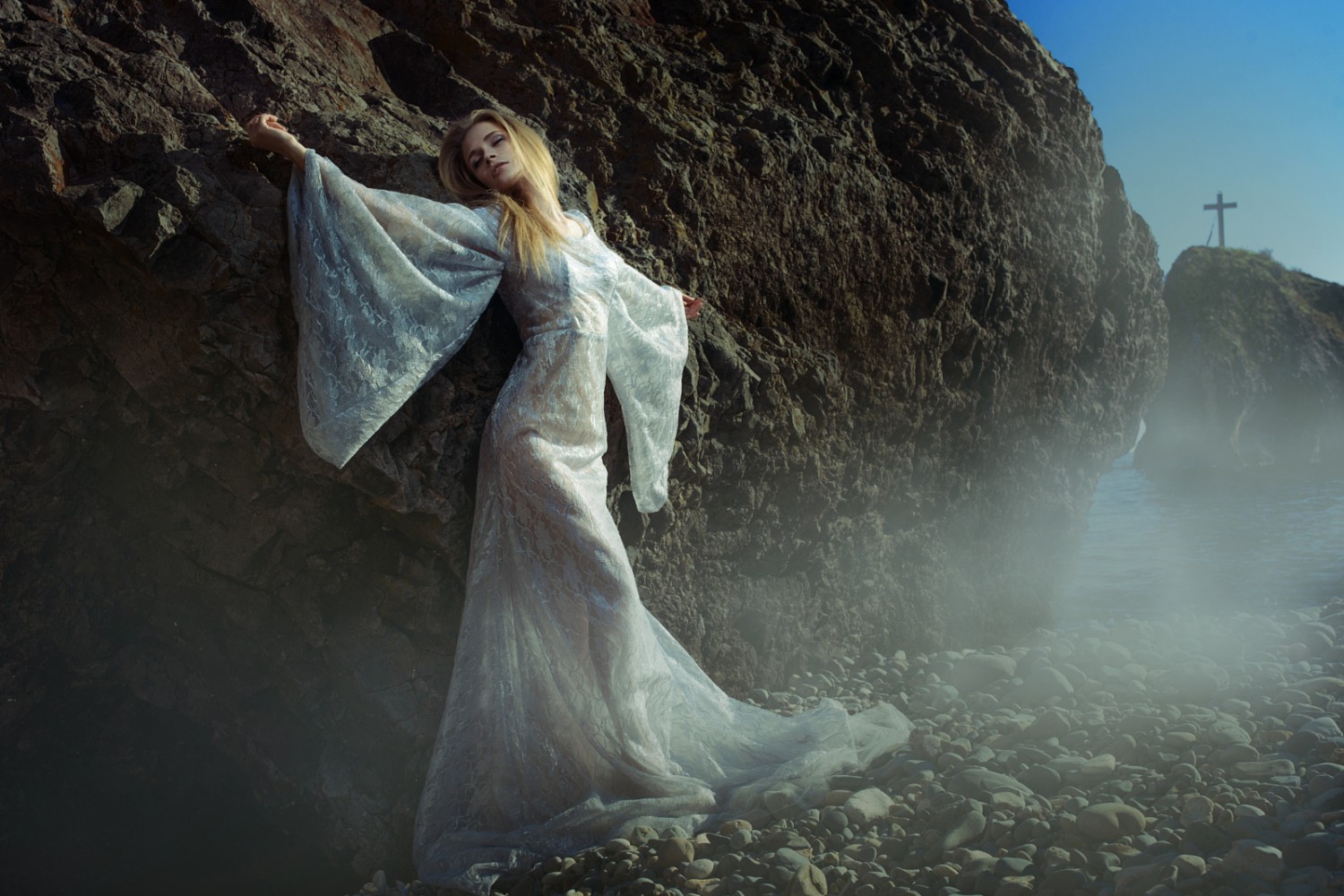Peter Tsai is an Editorial and Portrait photographer based in Chicago. His clients include Sony Electronics, City of Chicago, Time Magazine, The Smithsonian Air and Space museum, and numerous other magazines national and international.
For the past few years he’s been on a quest to capture stunning images of Chicago draped in a layer of fog. This is the resulting series, Cloud Chicago.
Introduction
So a little bit about me. I’m a professional Editorial and Portrait photographer in Chicago that is also a bit of a technologist. I am also occasionally a traveling photo assistant to Matthew Jordan Smith, traveling around the country and the world with his team.
I’ve taught flash photography and built the first DIY $50 wireless USB tether for cameras years ago. I’ve shot out of planes, trains, and off rooftops all to get the shot for clients like Sony, the City of Chicago, Smithsonian National Air and Space Magazine, Skydeck Chicago, and numerous magazines national and international.
The Birth of ‘Cloud Chicago’
About 6 years ago I saw an image of the Sears Tower (yes, is was still called that back then!) poking above the fog and I became enamored with the idea of getting a shot like that. I then thought up a bucket list of shots I wanted (Fog Skyscrapers, Northern Lights, etc) and this idea was one of them.
I’ve always been drawn to getting the hard shots, or rather the different ones. When everyone zigs, I zag because I find the difference is noticed by viewers and it makes the work stand out. I got a half-page in Time Magazine shooting the Cloud Gate (aka Bean), because they noticed my images of the hundreds that many other talented photographer had shot. I boomed my camera on a light stand about 14ft high to get higher perspective and show the light projection art more prominently:
It took about 2 more years before the right opportunity fell into place, and then I was able to be on top of the Hancock during some great fog that lasted the entire evening. It was at that point that I decided now that I had the shot of the city above the clouds, I should develop it out into a bigger personal project.
That became Cloud Chicago, which entails all of my favorite captures of the great city of Chicago with the clouds, either high up or down low, as one series of work.
Challenges
The main challenges involved in getting great fog shots are mainly knowing when to be up at an observatory to see the fog, and having access to somewhere high up inside a great building. Unless you live in a skyscraper it is hard to know when it’s a low cloud of fog, or just a huge layer with no end meaning 0 visibility even above.
I got an annual pass from the Hancock Observatory and that made going up much easier as the gamble wasn’t costing me a great deal every time. I had that for many years and it was great way to have access. More recently, I grew a working relationship with the Willis Tower Skydeck and that allowed me the access to get my later shots from their Observatory which is fabulous for me and much closer to where I live.
I really wanted a set of images from both towers for contrasting perspectives which I now have. In gambling I’d often look out to the lake in the evening driving home and if I saw something that looked like it had potential I’d run up there.
On one occasion a staff photographer friend from the Chicago Tribune posted an Instagram from the bottom of the Hancock with fog around it. I asked him if he thought it was a low fog and he thought it wasn’t that good or worth coming out. I gambled however and ran home grabbed some camera gear and went up—it was a fabulous 4+ hours watching fog during the daytime into dusk and then at night, by which time I was starving as I hadn’t eaten dinner, but It was worth it!
These days most people in the know will use technology. Many photographers all watch the local webcams that are placed on the larger buildings to get an idea of what conditions are like, back when I started most webcams weren’t working properly but it is better today.
Tips, Tricks, and Gear
Getting these shots can be a challenge if you don’t know the tips and tricks in shooting through glass at places with a no tripod policy. I don’t use anything fancy to eliminate glare, I just keep my lenses up against the glass and use a black scarf or black jacket I bring up with me. I do keep a little gaff tape with me if I need to hang it on the glass but that’s rare once you know how to block things out.
To keep the camera steady I have a Manfrotto digi-table-top tripod that is one of my favorite stabilizers to have because it weighs nothing and I can travel pretty much everywhere with it. I prefer it to the popular Gorilla pods because it has a proper ball head that I can precisely frame my camera with.
Another important bring is either a cable release or an intervalometer. I shoot with Sony and Nikon cameras, both of which have built in intervalometers to shoot a nice sequence for me that will get me the perfect still or make a great time lapse:
Camera-wise I like to shoot with the high-resolution cameras for this project, so it has been mostly with the Sony a7r and D800e, sometimes with the smaller Sony A6000 or an NEX as a backup. I like to use the Sonys as they’re smaller and allow me to have more gear when I go and not stand out.
Lens-wise I will always have either a 16-35 or 14-24 and the 16mm fisheye for the occasional different look. A telephoto will come along for detail shots when I want to isolate buildings. I have also used the Sony action cams for making fun time-lapses, they’re great if you’re a traveler and don’t want to have a bunch of gear. You can just suction cup it on and let it shoot for you while you enjoy the scene.
Post-Processing
I’m not really a heavy post-processor, most of my work for this project is done using Lightroom, although if I have any stray reflections or dust stubborn dust spots I will use Photoshop as its more efficient to clean things up.
A huge thanks to Peter for sharing this awesome series and the story behind it with us. You can check out the full Cloud Chicago set over on his 500px profile by clicking here, or browse through some of our favorite shots by scrolling down:
To see more of Peter’s work, follow him on 500px, visit his website, or check him out on Twitter.































Leave a reply